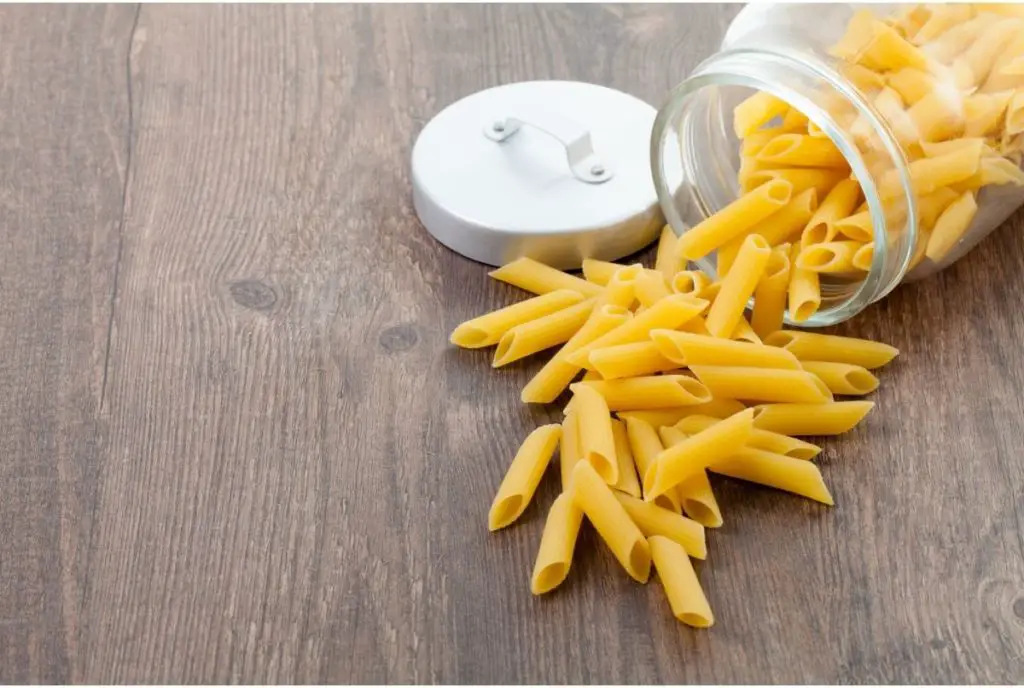Dry pasta is not something that first comes to mind when you think about freezing, but it definitely can be done. Whether you want to extend its shelf life or simply have no more room for storing it in your pantry, freezing dry pasta is a good option.
Still, you should know that, unless you freeze it properly, you can actually get a final result that reminds more of gummy snakes candy than pasta. Obviously, it will end up in your garbage, rather than the plate. As throwing away food should always be the last resort, it’s time to learn how to freeze it properly.

In this article, we’ll show you how to freeze pasta the right way, both store bought and homemade.
Can Dry Pasta Be Frozen?
Just like other dried foods, dry pasta (see also Freezing Cooked Pasta) can also be frozen. It’s not something people usually freeze, simply because its shelf life is about two years, and by that time, it’s probably going to be eaten. But in case the packaging you have at home is pretty close to its expiration date, freezing it is the only option aside from throwing it away. What’s more, if your freezer is halfway empty, you can also use it as storage space once your pantry is full.
How To Freeze Dry Pasta The Right Way
Freezing dry pasta is no rocket science (see also Does Pasta Dough Freeze?). But there’s a catch. You see, if it gets moist by any chance, it will become gummy and basically inedible. Now, that’s not hard to avoid. In most cases, freezing it in its original packaging will do, as the bag is sealed well. Just make sure to put it on top of other foods in the freezer, and not the other way around. If you leave your dry pasta on the bottom, there’s a good chance that something will crush it.
However, if you’ve already opened the packaging, it would be better if you stored it in a different bag or container. Plastic wrapping simply won’t do, because there’s a way for air and moisture to get in.
For homemade pasta (see also ‘Can You Freeze Ziti?‘), you should make sure it’s completely dry, then flash-freeze it. To do this, place pasta on the parchment paper, making sure no cutting touches another. Then, put the parchment inside the freezer for about 15 minutes. Then, take it out. If it’s sticking to the parchment paper or other pasta, then it’s not dry enough. In that case, do another round of flash-freezing.
For storing, a releasable freezing bag or a freezer-safe container are your best options. When packing, try to get as much air as possible from your packaging. Then, seal and label it with the storage date.
What’s The Best Option For Storing Dry Pasta In The Freezer?
As you probably know, the air is the main reason for prematurely spoiled food. That’s why we always recommend removing as much air as possible from the packaging. But that’s something you can’t exactly do by yourself.
If you want to store your dry pasta in the freezer in the best way possible, we recommend using the food saver. This is the device that sucks all the air out, creating a vacuum inside your bag. That way, your food can last longer, and the bag takes us as little space as possible.
How To Cook With Frozen Pasta?
Once you’re ready to eat pasta, take it out of the freezer and cook it the same way you usually do. There’s no need to thaw it, so forget about that long and daunting process.
Still, you should always check for freezer burns first. There’s always a chance of that happening while inside the freezer, and any ice crystals formed inside it can cause the dry pasta to become mushy once cooked. When it comes to texture, the only thing worse than gummy pasta is mushy pasta.
As for the extended shelf life, you can leave store bought dry pasta in your freezer pretty much indefinitely. In the case of homemade pasta, it will stay fresh for about 8 months inside your freezer.

